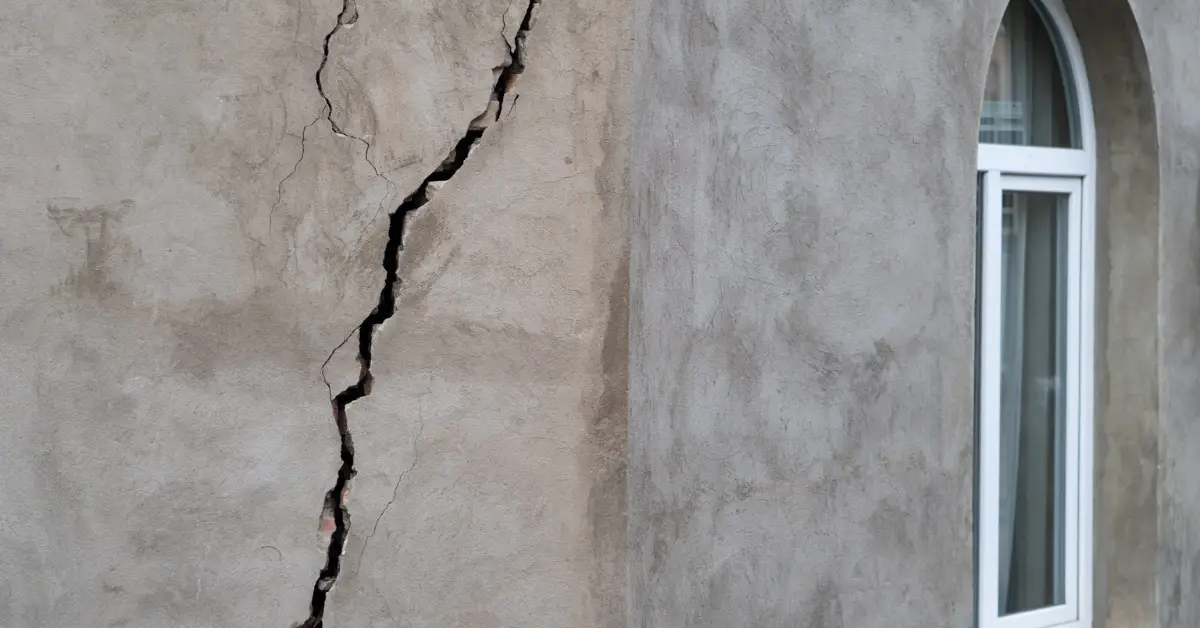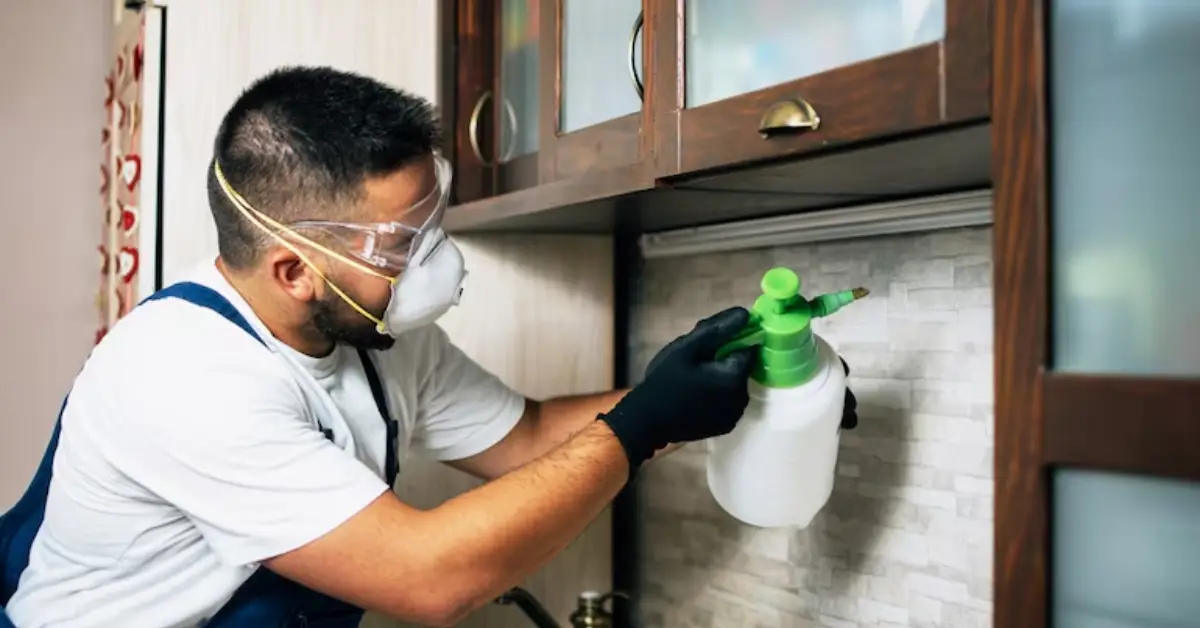10 Natural Ways to Banish Lizards from Your Home for Good
Lizards in the house — it’s one of those annoyances that’s hard to ignore. Whether you’re dealing with them scurrying across your walls or just spotting one unexpectedly in the kitchen, it’s enough to make anyone uncomfortable. And let’s face it, you’re not alone. You’ve probably searched for a way to get rid of them without using harmful chemicals, right?
Good news: getting rid of lizards naturally is not only possible, it’s easier than you think. The trick is understanding why they show up in the first place and how to make your home less inviting for them. Trust me, I’ve seen it all, and I’ll show you 10 proven, simple home remedies to get rid of lizards — no harsh chemicals, just everyday items that work wonders.
In this article, we’ll dive deep into effective natural methods you can try right now — whether it’s using spicy sprays, essential oils, or even some handy DIY traps. Plus, I’ll share some insights on what might be attracting them in the first place, so you can stop the problem before it even starts.
Ready to reclaim your space? Let’s dive in.
Why Lizards Come Inside — The Root Causes
Before diving into how to kick those lizards out, let’s first understand why they’re in your home in the first place. Trust me, it makes a huge difference. When you grasp the why, it becomes clear why these natural methods will actually work. So, let’s break it down.
What Attracts Lizards?
Lizards are opportunistic creatures — they don’t barge into your home out of spite. They’re after food, water, hiding spots, and a warm environment. Here’s how it works:
- Food (Insects): Lizards are hungry creatures, and your home is often a bug buffet. From ants to flies to mosquitoes, if you’ve got insects inside, you’ve got a potential lizard party.
- Water: Lizards need hydration, and any moisture around your home, especially during the warmer months, can attract them. Whether it’s in your bathroom, kitchen, or even a humid basement, the presence of water sources is like an open invitation to them.
- Hiding Spots: Lizards are stealthy creatures who love finding quiet, dark places to hide and stay safe. Gaps in walls, cracks in windows, or piles of clutter in your house? Perfect for them. They want to feel secure, and your home can offer plenty of hiding spots.
- Warmth: Lizards are cold-blooded and love warmth. If your home is well-heated, they’ll be drawn to it like a magnet. They tend to move inside when the weather outside gets too cold or too hot. Again, your home offers that perfect, cozy spot for them to settle.
Common Entry Points

Now that you know what’s attracting them, it’s time to figure out how they’re getting inside. It’s not just a case of them walking through the front door. Lizards can sneak in through the tiniest openings.
- Gaps and Cracks: Gaps around windows, doors, or walls are prime entry points. Even a small crack can be enough for a gecko or house lizard to slip through unnoticed. Understanding how pests sneak into your home is crucial. For more on common entry points for various pests and how to block them, check out our guide on the 5 most common pest entry points and how to block them. If you’ve got any holes in your window screens, you can bet that lizards are using them like highways.
- Ventilation Ducts: Another sneaky way they get in is through ventilation ducts. If your vents are poorly sealed, lizards can easily make their way inside, especially at night when they’re out hunting for food.
- Around Windows and Doors: As simple as it sounds, lizards can often enter through open windows or unsealed doors. They’re agile climbers and will take the path of least resistance.
So, here’s the bottom line: if you want to keep lizards out, you have to seal the entry points.
Why Natural Measures Work
Here’s where it gets interesting: natural deterrents work by addressing the root causes — the attractants — rather than just getting rid of the lizards themselves. Most articles will give you lists of remedies (some effective, some not), but here’s the thing: if you don’t deal with what’s drawing them in, they’ll just keep coming back.
Instead of killing them (which is harmful and counterproductive), natural methods like essential oils, spicy sprays, and sealing cracks focus on repelling or removing what attracts them in the first place. For example, peppermint oil or garlic works by disrupting the environment that draws lizards in, like hiding spots and insects. So, while you might not see the lizards disappear overnight, these methods help prevent new ones from entering and make your home less appealing overall.
Quick Note on Species
In the U.S., the most common house lizards are species like the House Gecko and Carolina Anole. These species are primarily active during the warmer months and are known for their quick, darting movements. Understanding the habits of these lizards can help you decide on the most effective natural deterrents.
- House Gecko: They love moisture and warmth, so if your home has a lot of humidity or fluctuating temperatures, they might show up. They’re also great insect hunters, so reducing the insect population will help keep them away.
- Carolina Anole: Often seen basking in the sun, they’re attracted to warmth and open spaces. If your home has plenty of sunlight, that’s another reason why they might be drawn inside.
By understanding these species and their behavior, you’ll have a better idea of where they’re coming from and why they’re so persistent in your home.
Quick Safety & Humane Reminder
Before we go any further, let’s quickly talk about something important — safety and humane practices.
Lizards Aren’t Your Enemies
It’s easy to think of lizards as pests, but most of them aren’t harmful. In fact, many species, like the gecko, are beneficial because they help control insect populations. They eat mosquitoes, flies, and ants — all things you definitely don’t want inside your house. So, while it’s understandable to want them out of your living space, remember that most lizards aren’t aggressive and do good work by keeping pests in check.
Be Cautious with Chemicals
If you have pets or young children at home, avoid harmful chemicals at all costs. Many pest control products can be dangerous to pets or leave behind toxic residues. When it comes to natural methods, you’re better off sticking to humane deterrents like essential oils, herbs, or physical barriers.
Know When to Call in the Pros
If you’re facing a severe lizard infestation that’s beyond DIY fixes, it might be time to call a professional pest control service. But always try natural remedies first, as they can be just as effective in solving the issue without harming the environment or your family.
The 10 Proven Natural Remedies
Now that we know why lizards are invading your home, let’s talk about what actually works. I’m sharing 10 natural remedies that I’ve tested and researched. Each method is practical, easy to implement, and focuses on repelling rather than harming the lizards.
1. Use Spicy Spray (Cayenne / Hot Pepper)

Lizards hate strong irritants — it overwhelms their senses. A simple cayenne or chili spray can create an invisible barrier around your home.
- How to do it: Mix 2–3 tablespoons of cayenne or chili powder (or even hot sauce) in 2 cups of warm water. Spray around windows, doors, corners, and any suspected entry points.
- Caveat: Keep it away from plants and pets; it can irritate skin.
- Why it works: Lizards avoid the strong smell and texture, making your home less inviting.
2. Place Onion & Garlic (Strong Odour Barriers)
Lizards dislike pungent smells like garlic and onion. Using these is a classic, cost-effective deterrent.
- How to do it: Place whole cloves or slices near windows, doors, and corners. Alternatively, steep chopped onion or garlic in water and spray around your home.
- Benefit: Simple, inexpensive, and immediately actionable. Find more information on this approach in The Spruce.
3. Essential Oils & Repellent Plants
Certain plants and essential oils naturally repel lizards while improving the aesthetics of your home.
- How to do it: Grow peppermint, lemongrass, or eucalyptus in pots near entryways, or dilute 15–20 drops of peppermint/eucalyptus oil in water and spray around the home.
- Why it works: Lizards are sensitive to strong scents; these oils disrupt their environment and keep them at bay.
- Benefit: Provides long-term prevention and is safe for pets if used carefully.
4. Remove Food & Insect Sources
Many lizards are in your home because of the food chain — they follow insects.
- How to do it: Seal food items, fix pet food left out, clean crumbs, and reduce clutter. Use bug repellents or traps to control insect populations. In addition to cleaning up crumbs and sealing food, consider adopting some smart home hacks to keep pests out all year, which help make your entire home less inviting to unwanted critters.
- Why it works: Without food (insects), lizards have less reason to stay.
5. Seal & Block Entry Points
If lizards can get in, they will. Preventing entry is crucial.
- How to do it: Seal gaps in doors, windows, and walls. Use mesh on vents and screens where needed. For more in-depth advice on how to seal potential entry points and prevent other pests from sneaking in, check out our article on the 5 most common pest entry points and how to block them.
- Benefit: Structural fix ensures long-term results. For tips on blocking entry, visit iProperty.
6. Use Reflective/Unusual Surfaces (Mirrors, CDs)
Lizards are hesitant around shiny, moving surfaces.
- How to do it: Hang old CDs, reflective tape, or small mirrors near their usual routes.
- Benefit: Confuses them and discourages movement into those areas.
7. Eggshells, Coffee Grounds & Other DIY Barriers
Some home remedies have mixed results but are worth trying.
- How to do it: Scatter cleaned eggshell halves or sprinkle coffee grounds in corners. The texture or smell may deter lizards.
- Benefit: Low-cost, kitchen-friendly method and allows you to clarify myth vs fact.
8. Keep Environment Less Inviting: Cool, Dry & Declutter

Lizards love warmth, humidity, and hiding spots.
- How to do it: Use fans or AC, fix leaks, trim shrubs near your house, and remove piles of clutter.
- Benefit: Creates a home environment that’s less appealing to lizards.
9. Use Natural Predators or Pets (Cats, Birds)
Predators naturally keep lizards away.
- How to do it: Adopt a cat or encourage birds near your home. You can also use predator decoys like rubber snakes.
- Benefit: Non-chemical, behavioral deterrent that adds another layer of protection.
10. Set Up Natural Repellent Sachets or Ultrasonic/Modern Aids
Newer methods can complement traditional remedies.
- How to do it: Fill small porous sachets with garlic, coffee, or chili powder and place them in corners or closets. Optionally, install an ultrasonic repeller.
- Why it works: Continuous scent or sound discourages lizards from entering frequently used areas.
- Benefit: Adds a modern twist while staying mostly natural. For more on ultrasonic devices, visit Cleanipedia.
Bonus Tips — Preventing Reinfestation
Stopping lizards once is one thing, but keeping them from coming back takes a little planning. Here are some practical habits you can start implementing today to make your home consistently unappealing to them:
- Routine inspection: Take a monthly walk-through of your home, checking for cracks, gaps in screens, and vents. Even small openings are enough for lizards to sneak in.
- Seasonal check-ups: Warmer months usually see an uptick in lizard activity. Pay extra attention during spring and summer to keep new visitors from moving in.
- Landscaping: Trim vegetation close to your house, remove leaf litter, and avoid stacking wood or clutter near walls. These create hiding spots lizards love.
- Monitoring insect population: Lizards follow their food. If bugs start multiplying indoors, you can expect lizards to show up. Keep pests under control to reduce their incentive.
- Educating the household: Make sure everyone in your home knows to keep food sealed, wipe up crumbs, and close doors and windows at night. Small habits make a big difference.
- Keep a log: Note where and when you see lizards. Over time, this can reveal patterns and help you address recurring problem spots before they become infestations.
Common Myths & What Doesn’t Work (And Why)

There’s a lot of misinformation out there about getting rid of lizards, and separating fact from fiction helps you focus on solutions that actually work:
- Baking soda kills lizards: There’s no reliable evidence this works. Lizards are more likely to ignore it than be affected.
- Eggshells always repel: Mixed results here. In some cases, lizards may even be attracted to eggshells as hiding spots, rather than deterred.
- Instant eradication: Spraying once won’t make lizards disappear forever. These creatures adapt quickly, and if food or shelter remains, they’ll return.
Why these fail: Lizards are smart survivors. They acclimate to environments and will keep coming back if their basic needs — warmth, shelter, and food — are still available. This is why a consistent, multi-step approach works best.
When to Call a Professional
Sometimes, despite your best efforts, DIY methods may not be enough. Knowing when to call a professional ensures the problem doesn’t escalate:
- Signs of serious infestation: Multiple lizards seen daily, droppings everywhere, visible eggs or nests — these are red flags that you need expert help.
- What a pro offers: Pest controllers can assess structural issues, remove insects that attract lizards, and ensure compliance with local wildlife regulations.
- Tips for humane treatment: Ask for non-lethal, natural barrier methods to stay aligned with your goal of keeping your home lizard-free without harming wildlife.
- Cost vs benefit: For large homes or multi-unit buildings, professional help can save time and prevent damage, even if natural remedies are part of your ongoing maintenance.
Final Thoughts
So here’s the bottom line: getting rid of lizards naturally works best when you combine multiple strategies. Using natural remedies, keeping your home clean and dry, and sealing potential entry points is the most effective approach. Each step alone helps, but together they create a home that lizards simply don’t want to enter.
Now it’s your turn. Pick 2–3 remedies today — maybe a spicy spray, sealing gaps, and placing a repellent plant — and watch the difference over the next week. Small consistent actions really pay off.
I’d love to hear from you: Which remedy worked for you? Share your tip in the comments below — your experience could help someone else struggling with lizards!
And if you want a handy guide, visit Build Like New to download a printable “Lizard-Free Home” checklist. It’s designed to help you keep your home naturally lizard-free with step-by-step reminders.
Disclaimer: The methods outlined in this article are natural and non-toxic, but results may vary depending on the severity of the infestation and your specific environment. Always take care when using any DIY remedy around pets, children, or plants. If problems persist, it’s advisable to consult a professional pest control expert.


